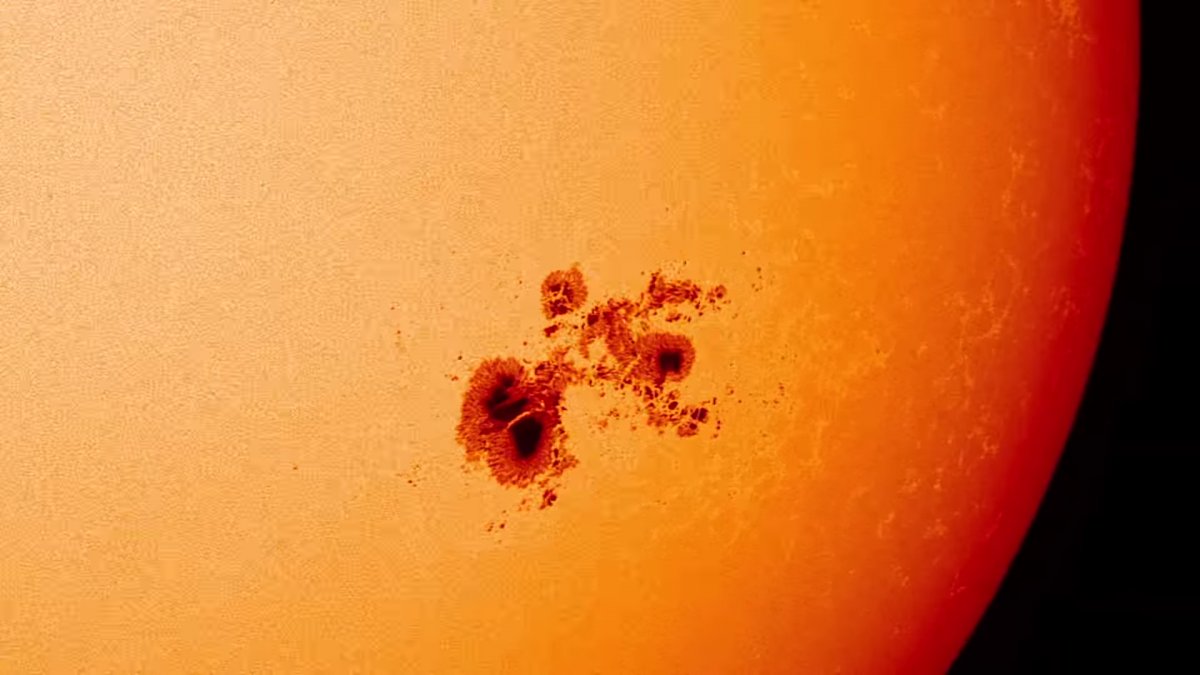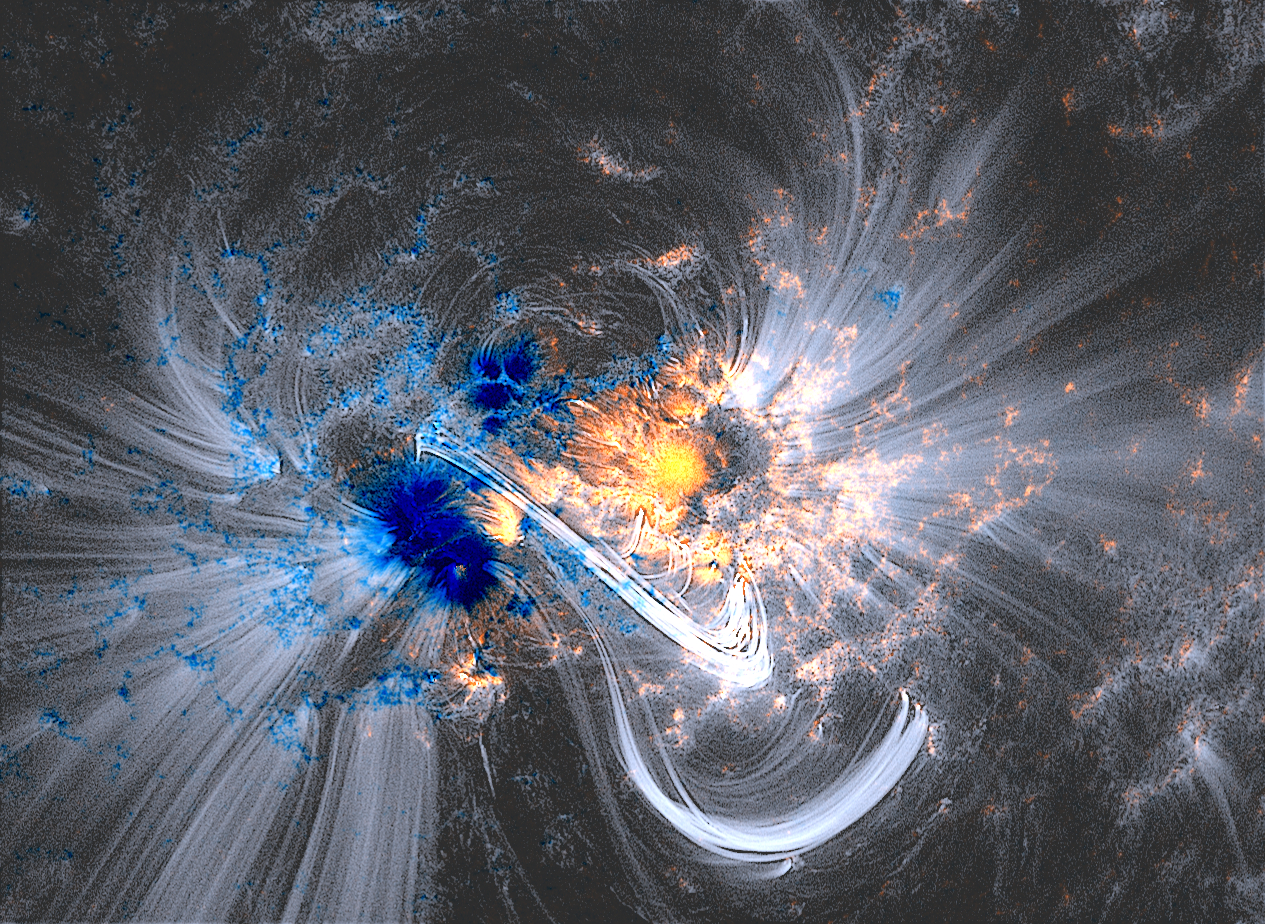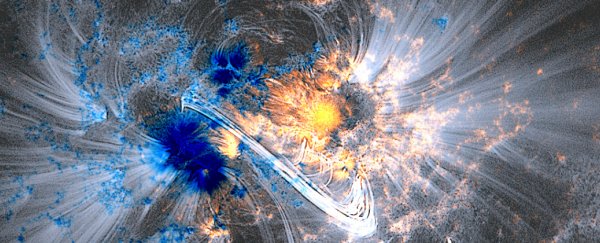From 93 million miles away, we earthlings are blissfully unaware of the sheer magnitude of powerful activity roiling on the the Sun's surface. But thanks to NASA's Solar Dynamics Observatory (SDO) spacecraft, which has been snapping pictures of the Sun for the last five years, we can see this massive monster in action, like in the SDO image above.
The Sun's magnetic field is constantly changing unlike Earth's, which means it's growing and shrinking in strength.
Sometimes it can swell to be thousands of times stronger than Earth's. When that happens, it generates black blemishes called sunspots, as shown in the image below:
 NASA/SDO
NASA/SDO
If we go back to the first image, what you're seeing are two giant sunspots in blue and yellow. Both are large enough to completely swallow the Earth.
The blue and yellow are false colours - in reality, the sunspots are black. But these false colours serve an important purpose: The magnetic field of the sunspot in blue has an opposite charge from the sunspot in yellow.
What's happening here is similar to what occurs when you throw a handful of iron filings onto a bar magnet - shown in the GIF below:

The bar magnet has a north and south pole that generates magnetic field lines around it. These fields are completely invisible to the naked eye, but when you sprinkle some iron shavings around it, they actually then outline the fields so you can see them.
The super-hot gas spewing from the solar surface does the same thing: It traces the immensely powerful magnetic field lines connecting the sunspot that acts like the north pole of a bar magnet with the sunspot that represents that south pole.
The most stunning part of this recent SDO image (show again below) are the white, ethereal wisps - called coronal loops - streaking across the solar surface. These pale whiskers represent hot gas outlining the magnetic field lines connecting the two sunspots.
 NASA/SDO
NASA/SDO
Although sunspots were first observed in the 16th century by Galileo Galilei - the first scientist to study the universe through a telescope - researchers are still unsure how these pockets of intense magnetic activity generate sunspots. But with SDO and its more than 100 million pictures taken over the last five years, scientists are hopeful that they will uncover the mysterious mechanism behind these powerful magnetic solar pockets.
This article was originally published by Business Insider.
More from Business Insider:
